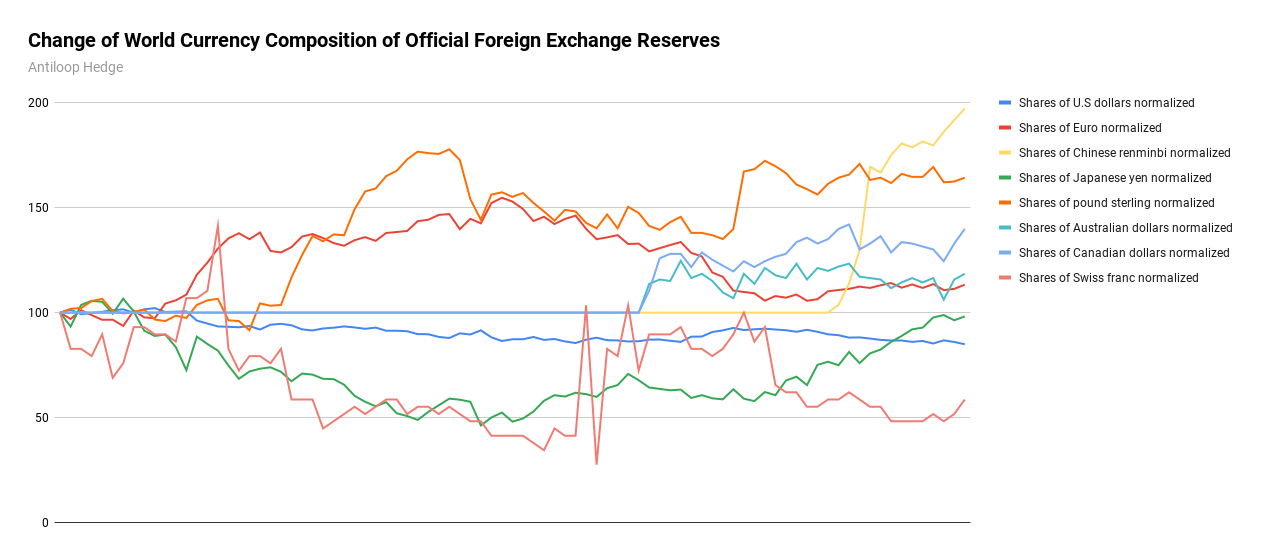Currency reserve status


Whilst leading economists around the world are worried about inflation looming around the corner, Federal Reserve chief Jeremy Powell says there is no hurry to raise interest rates. Despite the fact that the monetary base in the US expanded by almost 25 percent, the Fed believes that it is not yet visible in the consumer price index CPI and that until they have really started inflation, they will not raise interest rates.
Whilst leading economists around the world are worried about inflation looming around the corner, Federal Reserve chief Jeremy Powell says there is no hurry to raise interest rates. Despite the fact that the monetary base in the US expanded by almost 25 percent, the Fed believes that it is not yet visible in the consumer price index CPI and that until they have really started inflation, they will not raise interest rates.
Bull & Bear-Certificates
The American ten year CPI marked a one year high on February 24 of 1.38 percent. Still very low historically, but a sign that the outlook for the US economy nevertheless looked better now than a few months ago. Had it not been for the fact that the market has been backwards ever since Ben Bernanke, in response to the financial crisis in 2008, switched up QE to lead the United States out of the crisis. The problem, however, was that the stimulus survived even after the crisis, and we have now become accustomed to a reality where QE is not only used as a tool in emergencies to slow down a recession, but to support financial markets and ensure whatever the reason that they do not fall more than a few percent.
In addition to the effects on prices of assets such as shares and most recently commodities, money printing obviously also affects the value of the currency in the country where the money is printed. In the long run, the outlook for the US dollar looks bleak, while for the Chinese renminbi, of which the Chinese central bank has not printed as much, the future looks all the brighter.
The greatest strength of the US dollar is its position as a reserve currency. This is primarily what distinguishes the USD from, for example, ARS. With high demand for dollars, it takes longer before the currency finally loses confidence and begins a spiral into the abyss. However, that is what’s happening right now.

Note: Past development is no reliable indicator of future development.
To understand why US reserve currency status is under threat, one must first understand why the dollar was given the pronounced role from the beginning of 1944. Previously, reserve currency status was only an expression of the currency in which the majority of global trade transactions were made. backed by gold, it can thus be said that until the United States gained reserve currency status, gold was a reserve currency. After World War I, however, Britain finally had to leave the gold standard to finance the war by printing money, and the United States, whose economic situation was better than most in the same period, stood as lenders and had debts repaid in gold. This eventually led to the majority of the world's gold reserves being in US vaults, and the USD was ultimately the only currency still backed by gold.
Since then, that has changed, and the United States has long since given up the stability of backing its currency, such as gold, and printing money at an ever-increasing rate. After the pandemic in 2020, they switched up further and now there is no return for the dollar.
Our Eastern superpower China chose to handle the pandemic somewhat differently and their goal is now to take an ever-increasing place in global central bank reserves. Despite the fact that the Chinese renminbi today only make up a few percent of global reserves, it is all the more interesting to look at the rate of change.

Rate of change quarterly 1999 Q1 - 2020 Q4
Note: Past development is no reliable indicator of future development.
The US dollar still accounts for the majority of global foreign exchange reserves, but the trend is clear. There is no longer just one currency that suits all needs, but central banks see the need to diversify their foreign exchange reserves. Therefore, it is not unreasonable to imagine that the 2 percent of Chinese renminbi today will climb to 10-15 percent by 2030.
If the trend points to increased diversification among reserve currencies rather than a single one, it would mean that demand for the USD falls while they continue to print money. In a few years' time, it will have devastating consequences for the world's largest economy today.
This information is in the sole responsibility of the guest author and does not necessarily represent the opinion of Bank Vontobel Europe AG or any other company of the Vontobel Group. The further development of the index or a company as well as its share price depends on a large number of company-, group- and sector-specific as well as economic factors. When forming his investment decision, each investor must take into account the risk of price losses. Please note that investing in these products will not generate ongoing income.
The products are not capital protected, in the worst case a total loss of the invested capital is possible. In the event of insolvency of the issuer and the guarantor, the investor bears the risk of a total loss of his investment. In any case, investors should note that past performance and / or analysts' opinions are no adequate indicator of future performance. The performance of the underlyings depends on a variety of economic, entrepreneurial and political factors that should be taken into account in the formation of a market expectation.